Here we talk about;
- Tracing the developments in phototherapy
- Discuss the targeted phototherapy
- Compare UV-TPT with Nb UVB and excimer laser technology
- Outline the different machines available
- Discuss the existing data in light of our experience
Diffey B.L. ‘Ultraviolet phototherapy of skin diseases’. Physics and Engineering in Medicine in the New Millennium, IPEM 2000, 65-67.
- However, while considerable progress has been made in cellular and cutaneous photo-biology, and in the technology of ultraviolet lamps, it is apparent that developments in phototherapy have not kept pace with scientific progress, as has been the case with radiotherapy.
Is This Scenario Changing Now?
Phototherapy Developments
- BB UVB machines
- PUVA machines
- SUP or selective phototherapy (310-318)
- Narrow band UVB
- Photodynamic therapy
- UVA1 therapy
- Excimer laser
- UV light Targeted phototherapy
- Monochromatic light machines
- Low-level lasers
Or is all this an old dog with new tricks?
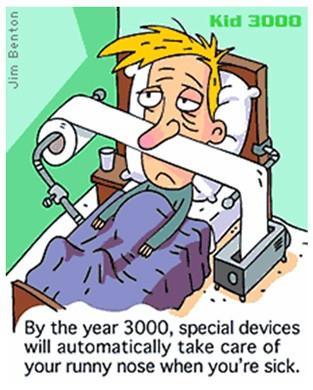
Conventional Phototherapy
- Whole body cabinets
- Palms and soles machines
- Scalp machines
- Home use machines
- All involve Direct exposure to the tubes
Conventional Phototherapy-disadvantages
- Exposure of uninvolved areas
- Slow delivery system
- Slow response
- Frequent visits to clinic
- Difficulty in applying to certain areas( genitals, oral mucosa, ear)
- Difficult for children
- Large office space required
Targeted Phototherapy
- Concentrated phototherapy
- Focused phototherapy
- Microphototherapy
Delivery of UV/laser light through handheld devices focused on specific areas. The definition includes laser, UV and Monochromatic ( intense pulse) light
Targeted Phototherapy-advantages
- Exposure of only involved areas
- Handheld delivery
- Fast delivery
- Delivery of supererythemogenic doses of UV
- Faster response?
- Less Frequent visits to the clinic?
- Treatment of difficult areas (scalp, nose, genitals, oral mucosa, ear)
- Easy administration for children
- Less space-occupying
Targeted Phototherapy-modalities
- Excimer laser
- UV light sources with improved handheld delivery systems
- Intense pulse light systems
Excimer laser
- Uses Xe Cl2 gas
- 308 nm wavelength
- Previously used in cardiology and ophthalmology
- Delivery system may be fibre optic/water guided
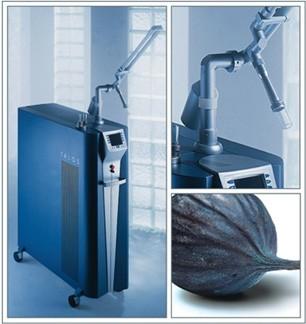
- Very quick delivery
- Initial reports claimed response with in 1-3 exposures in psoriasis and vitiligo
- works in resistant lesions and scars?
- Mechanism?
- Higher doses?deeper penetration? Activation of dormant melanocytes?
- Xtrac from photomedex , Talos from wavelight
- Very expensive-130,000 $
- Huge machine-over 120 kgs
- High maintenance cost
- Frequent replacement of Xe CL2 gas
- Frequent breakdown of fibre optic cables
Initial Studies
J Am Acad Dermatol May 2002, part 1 • Volume 46 Treatment of vitiligo with the 308-nm excimer laser: A pilot study James M. Spencer, Robert Nossa, Jyotendra Ajmeri
- Twenty-nine patches of vitiligo from 18 patients
- treated 3 times a week for a maximum of 12 times
- 120-nanosecond, 20-Hz pulse with a 10 × 10-mm spot size and a power output of 60 mW of laser light
- Exposure time: 2 seconds, increased by 2 seconds at every other visit
- Results: Twenty-three vitiligo patches had 6 treatments, with some repigmentation in 57% of the treated patches.
- Eleven vitiligo patches from 6 patients had 12 treatments, with in some repigmentation in 82% of the treated patches.
After 5 treatments
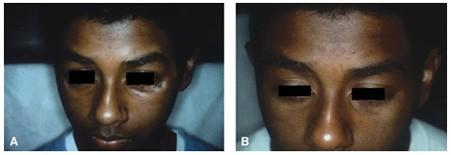
After 12 Sessions
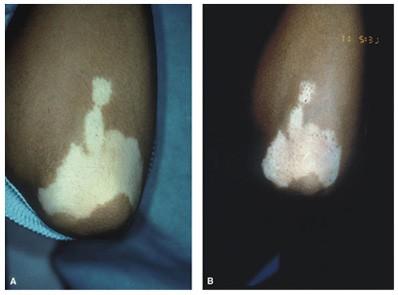
Thirteen patches of vitiligo from 5 patients had previously received and failed to respond to PUVA therapy Eight of these 13 patches showed at least some response.
J Am Acad Dermatol May 2002, part 1 • Volume 46, Treatment of vitiligo with the 308-nm excimer laser: A pilot study, James M. Spencer, Robert Nossa, Jyotendra Ajmeri
- Conclusion: This degree of repigmentation in a period of 2 to 4 weeks is much higher than that achieved with any other present vitiligo therapy. The xenon-chloride excimer laser may represent a new treatment modality for the management of stable vitiligo.
Int J Dermatol. 2003 Aug;42(8):658-62. 308-nm excimer laser for the treatment of localized vitiligo. Taneja A, Trehan M, Taylor CR.
- Twice-weekly 308-nm UV-B radiation for a maximum of 60 treatments, for lesions which had been unsuccessfully treated previously with at least one other method of treatment.
- Initial doses were 100 mJ/cm2 with increments of 10-25%
Arch Dermatol. 2000;136:619-624 308-nm Excimer Laser for the Treatment of Psoriasis, A Dose-Response Study, Pravit Asawanonda, R. Rox Anderson et al
- it is possible to clear psoriasis with as little as 1 treatment with moderately long remission.
- Treatment of other inflammatory diseases and limited psoriasis
- seems reasonable to pursue with this modality and conduct further studies
Lasers Surg Med. 2002;31(3):202-6. Follow-up survey of 308-nm laser treatment of psoriasis, Rodewald EJ, Housman TS, Mellen BG, Feldman SR.
- Patients (55% of total) reported overall satisfaction with the treatments, and 63% of patients thought they needed additional laser treatments, including for maintenance.
- Subjects (25%) reported that the laser treatments were better than any other treatment they had tried.
- Adverse effects were mild and had either disappeared or were significantly decreased in 86% of patients
Lasers Surg Med. 2003;33(3):158-60. Treatment of oral lichen planus with the 308-nm UVB excimer laser–early preliminary results in eight patients. Kollner K, Wimmershoff M, Landthaler M, Hohenleutner U.
- Eight patients with OLP were treated using the 308-nm UVB excimer laser
- RESULTS: Clinical improvement was achieved in six patients. Two patients showed complete remission, of which one patient showed recurrence of the lesions after 4 weeks.
- CONCLUSION: The preliminary results in our opinion warrant further studies of this treatment
James Ferguson, MD, FRCP, Journal Watch Dermatology January 14, 2003
- In both theory and practice, this treatment is effective
- The excimer 308-nm laser effected faster clearance at a lower cumulative dose and spared unaffected skin from unnecessary exposure
- The blistering response may raise a problem for patients
- Controlled trials are needed
- I suspect that until such information is available, this expensive, high-tech treatment will remain confined to specialist centers
Has TPT technology lived up to its promise?
Excimer laser
- Thirty-five patients with vitiligo were included. Each lesion was treated twice a week by the 308-nm excimer laser for a maximum of 24 sessions.
- In “UV sensitive” areas (face, neck, trunk), 8/14 lesions (57.1%) had a re-pigmentation rate, 75% versus 6/38 (15.8%) in “UV resistant” areas(bony prominences and extremities)
Treatment of vitiligo by 308-nm excimer laser: an evaluation of variables affecting treatment response Lasers Surg Med. 2004;35(2):152-6
Tacrolimus with excimer
- The combination treatment of 0.1% tacrolimus ointment plus the 308-nm excimer laser is superior to 308-nm excimer laser monotherapy for the treatment of UV-resistant vitiliginous lesions (P<.002). The efficacy and the good tolerance of the 308-nm excimer laser in monotherapy for treating localized vitiligo were also confirmed, but this treatment regimen should be proposed only for UV-sensitive areas.
Arch Dermatol. 2004 Sep;140(9):1065-9. Topical tacrolimus and the 308-nm excimer laser: a synergistic combination for the treatment of vitiligo Passeron T et al.
Comparison of the 308-nm excimer laser and a 308-nm excimer lamp with 311-nm narrowband ultraviolet B in the treatment of psoriasis Kollner KBr J Dermatol. 2005 Apr;152(4):750-4.
- The study did not show a statistically significant difference (P > 0.05) comparing 308-nm laser therapy, 308-nm lamp therapy and 311-nm narrowband therapy after 10 weeks. The mean number of treatments to achieve clearance was 24.
- With the accelerated scheme, clearance could be achieved with fewer treatments and with half the cumulative dose of the first regime. Nevertheless, side-effects such as blistering and crusting were also increased.
- CONCLUSIONS: Both 308-nm light sources can clear patch psoriasis in a similar manner to standard phototherapy, with the advantage of the ability to treat exclusively the affected skin and with a reduced cumulative dose, thus perhaps reducing the long-term risk of carcinogenicity.
Treatment of vitiligo using the 308-nm excimer laser. Hadi S et al
- A retrospective chart review of 97 patients with chronic stable vitiligo was done with a total of 221 vitiligo patches treated.
- RESULTS: Out of 221 vitiligo patches treated, 50.6% showed 75% pigmentation or more, 25.5% achieved 100% pigmentation of their patches, and 64.3% showed 50% pigmentation or more. Lesions on the face responded better than lesions elsewhere.
- CONCLUSION: The 308-nm xenon chloride excimer laser is an effective and safe modality for the treatment of vitiligo, with good results achieved in a relatively short duration of time.
Photomed Laser Surg. 2006 Jun;24(3):354-7
Treatment of Vitiligo with 308-nm xenon-chloride excimer laser: therapeutic efficacy of different initial doses according to treatment areas. J Dermatol. 2004 Apr;31(4):284-92 Choi KH
- One hundred forty vitiligo patches from 69 patients were assigned to 4 groups; face and neck, trunk, extremities, and acral and joint areas.
- The lesions in acral and joint areas showed the worst responses throughout the treatment sessions
Experience with excimer laser in 34 pts
- A total of 34 patients were treated between January 2003 and February 2005.
- Of the 28 patients with psoriasis, over 80% had greater than 75% improvement after an average of 12 treatments.
- While the number of patients was small, excimer laser showed promising results for palmoplantar psoriasis.
- Possibly due to patient selection bias, we have not had the same success as other studies for the treatment of vitiligo with this modality
Rivort J J Drugs Dermatol. 2006 Jun;5(6):550-4
Is excimer laser worth the cost?
- Advantages
- Localized delivery
- Quicker results?? marginal?
- Disadvantages
- High cost
- Maintenance problems
- Not effective in acral vitiligo
I am constrained to state that excimer has not lived up to its Expectations-the only advantage seems to be avoidance of Carcinogenity with some benefits in no of sessions
Other advances-monochromatic excimer light (IPL) machines
- Excilite( 304 nm), Pxlite( 308 nm)
- Use monochromatic light (intense pulse light)
- LARGE TREATMENT SURFACE:
- 36*14 cm
Monochromatic excimer light 308 nm in the treatment of vitiligo: a pilot study. Leone G, Iacovelli P, Paro Vidolin A, Picardo M.J Eur Acad Dermatol Venereol. 2003 Sep;17(5):531-7
- 37 vitiligo patients
- Treated twice weekly with MEL for a maximum period of 6 months.
- RESULTS: Thirty-five patients (95%) showed signs of repigmentation within
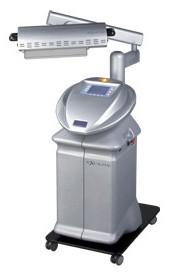 the first eight treatments.
the first eight treatments. - The treatment resulted in good repigmentation in 16 patients, and excellent repigmentation in 18 patients.
- In addition, some patients (n=3) not responding to prior narrow-band UVB (NB UVB) phototherapy showed good results with MEL.
308 nm Monochromatic light in vitiligo
- CONCLUSIONS: Treatment with 308 nm MEL for vitiligo may be more effective in obtaining rapid repigmentation than phototherapy with NB UVB
- The results similar to those recently reported with a 308 nm excimer laser
- But 308 MEL could present some advantages: the possibility of treating larger areas compared to the 308 nm excimer laser, with shorter treatment times and better patient compliance
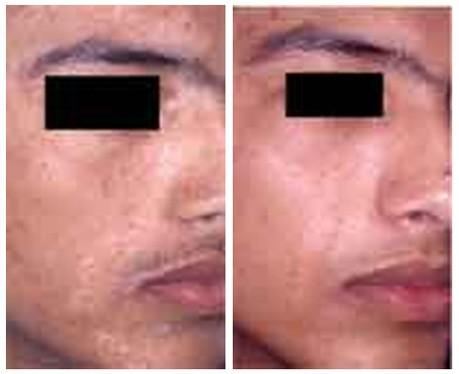
- Excimer light is a more suitable machine as compared to the 311nm laser
- more reasonable in cost
- Has a larger spot size
- Easier maintenance
Light-based targeted phototherapy
- Light source is a high-pressure burner emitting UV light either in SUP range or UVA and SUP range
- Spot size : 1cm to 3 cm
- Single or multiple deliveries
- Automatic Calibration
UV- TPT vs excimer laser
- Excimer laser
- Very quick delivery
- 308nm
- Easy to administer
- Very bulky( over 100 kgs)
- Difficult to handle
- Frequent breakdowns
- Very expensive>130000 $
- High Maintenance cost(XeCl2 gas)
- TPT
- Quick
- 304-318 nm(SUP)
- Easy
- Small desktop machines
- Easy to handle
- No breakdowns
- Less expensive(25,000-50,000 $)
- Maintenance free
Dual Light

- Output: UVA Range 330-380nm UVB Range290-330 nm
- UVA Intensity(Handpiece) 100-550 mW/cm² for 3.63 cm² aperture
- UVB Intensity(Handpiece) 50-250 mW/cm²for 3.63 cm² exit aperture
TPT-Daavlin
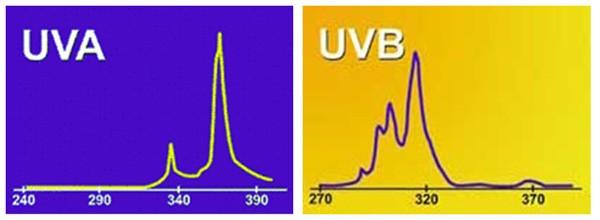
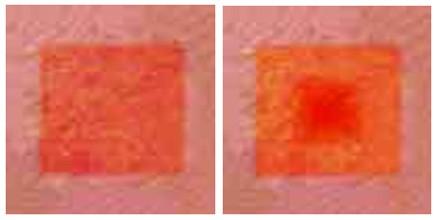
B Clear and Relume from Lumenis
- B celar for psoriasis
- Relume for stretch marks
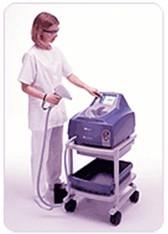
TPT( Bclear) in psoriasis-C.Derreicks(AAD presentation)
- 15 patients tried
- Cleared in 2-6 weeks
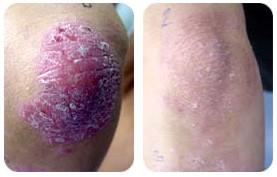
Saalman CUP Device
- SUP range in UVB
- 340-360 nm in UVA
- Delivery not as quick as other machines
- Cheaper
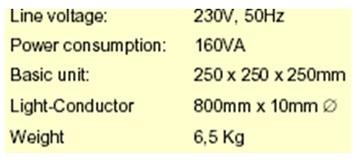
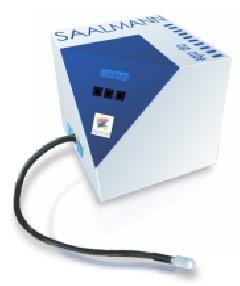
| Feature | Dualight | B clear | Saalman |
| Av.UVB range: | 304 | 318 nm | SUP RANGE PEAK311 NM |
| Delivery system | liquid guided | Fibre optic | water guided |
| UVApeak | at 360 nm | None | 360 nm |
| Spot size | 3.63 sq cm | 2.56 sq cm | 1 sqcm |
| Automatic calibration | Yes | Yes | no |
| Rapid delivery | 100mj in o.7sec | ??? | 100MJ IN 5 SECS |
| Wt size | 8 kgs cm17*42*29 | 15 kgs Cm 38*43*51 | 9.3 kg kgs CM 26*30*12 |

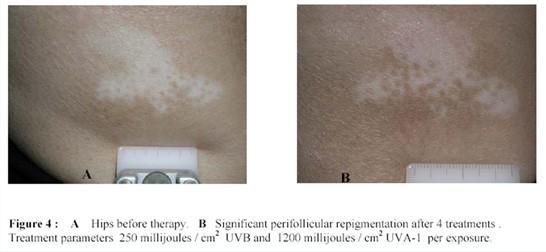
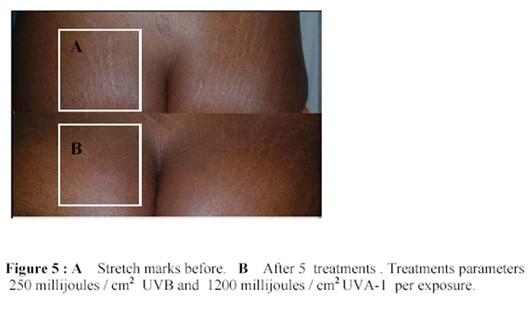
Bioskin- Narrow-Band UV-B Micro-Phototherapy: A New Treatment for Vitiligo- Menchini G, Tsoureli-Nikita E, Hercogova J Eur Acad Dermatol Venereol. 2003;17:171-177
- Five hundred and ten subjects (69.48%) of the 734 achieved normal pigmentation on more than 75% of the treated areas.
- In particular, 112 of these were totally repigmented.
- One hundred and fifty-five (21.12%) individuals achieved 50-75% pigmentation of the treated areas, and 69 (9.40%) showed less than 50% repigmentation.
- No patients showed acute or chronic relevant adverse effects.
TPT – Our Experience
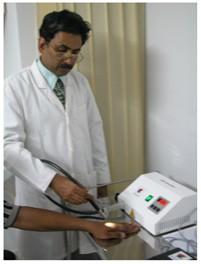
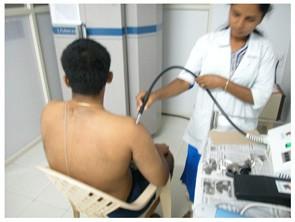
Our experience with Sallman machine
- 45 patients
- 20 children and 25 adults
- Vitiligo: 38 patients
- P Alba: 5 patients
- Psoriasis: 5 patients
- Other diseases tried: alopecia areata, lichen planus, lichen simplex chronicus
Vitiligo
- All patients of vitiligo vulgaris localisata responded well
- Acral lesions: poor response
- Segmental vitiligo poor response
Difficult lesions can be Treated
- Face: eye lid, lips
- Ears
- Under the surface of chin
- axilla
- Glans penis
Our Experience
- Lip 12 lesions: 50% improvement in 6 cases
- Face 14 lesions: 90% improvement in all cases
- Knee and elbow:14 lesions: 75% improvement
- Glans penis: 3 patients: mild repigmentation in one patient only
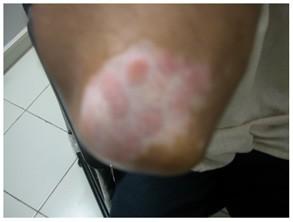
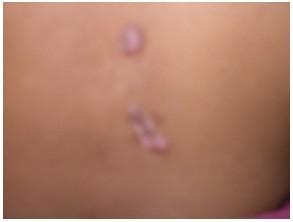
Vitiligo-3 exposures
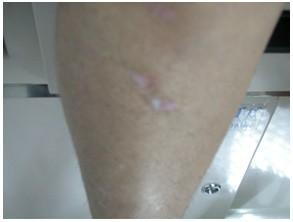
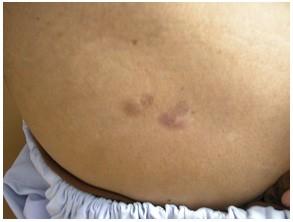
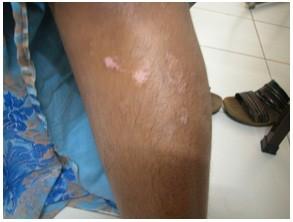
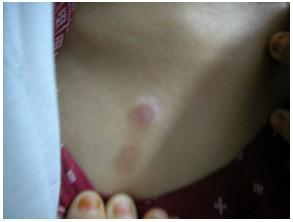
Vitiligo after 12
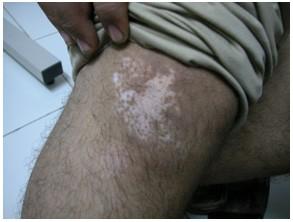
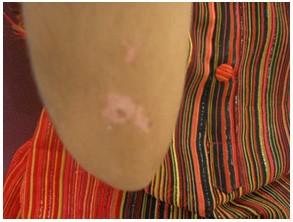
Psoriasis-5 Exposures
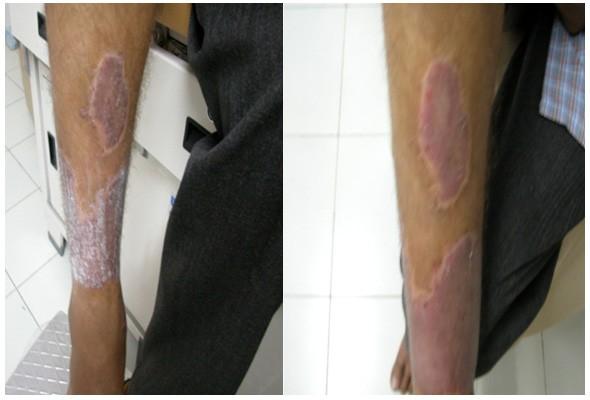
Stretch marks-3 exposures
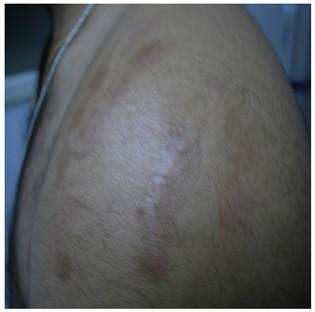
Summary: Role of TPT
- An adjuvant to conventional therapy
- Not a replacement in extensive disease
- Localised lesions
- Resistant lesions
- Children and old people
- Difficult areas: nails, scalp, glans? lips, anal region, oral mucosa
Gives an option; great add on to your practice; creates a niche
Indications – TPT
- Psoriasis
- Vitiligo
- Lichen planus
- LSC
- Nummular Eczema
- Prurigo
- Hypopigmented scars?
- Strech marks



